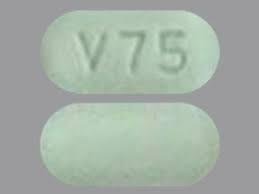Gemtesa Disease Interactions
There are 3 disease interactions with Gemtesa (vibegron).
Vibegron (applies to Gemtesa) liver disease
Moderate Potential Hazard, Moderate plausibility.
Vibegron is not recommended in patients with severe liver dysfunction (Child-Pugh C), as it has not been studied in these patients. No dose adjustment for vibegron is recommended for patients with mild to moderate liver dysfunction (Child-Pugh A and B).
Vibegron (applies to Gemtesa) renal dysfunction
Moderate Potential Hazard, Moderate plausibility.
Vibegron is not recommended in patients with estimated GFR less than 15 mL/min/1.73 m2 (with or without hemodialysis), as it has not been studied in these patients. No dose adjustment for vibegron is recommended for patients with mild, moderate, or severe renal dysfunction (estimated GFR 15 to less than 90 mL/min/1.73 m2).
Vibegron (applies to Gemtesa) urinary retention
Moderate Potential Hazard, Moderate plausibility.
Urinary retention has been reported with vibegron. The risk of urinary retention may be increased in patients with bladder outlet obstruction and in those taking muscarinic antagonist medications to treat overactive bladder. Patients should be monitored for signs/symptoms of urinary retention, especially those with increased risk. The use of vibegron should be discontinued if urinary retention develops.
Switch to professional interaction data
Gemtesa drug interactions
There are 16 drug interactions with Gemtesa (vibegron).
More about Gemtesa (vibegron)
- Gemtesa consumer information
- Check interactions
- Compare alternatives
- Pricing & coupons
- Reviews (201)
- Drug images
- Side effects
- Dosage information
- During pregnancy
- Support group
- FDA approval history
- Drug class: urinary antispasmodics
- Breastfeeding
- En español
Related treatment guides
Drug Interaction Classification
| Highly clinically significant. Avoid combinations; the risk of the interaction outweighs the benefit. | |
| Moderately clinically significant. Usually avoid combinations; use it only under special circumstances. | |
| Minimally clinically significant. Minimize risk; assess risk and consider an alternative drug, take steps to circumvent the interaction risk and/or institute a monitoring plan. | |
| No interaction information available. |
Further information
Always consult your healthcare provider to ensure the information displayed on this page applies to your personal circumstances.


